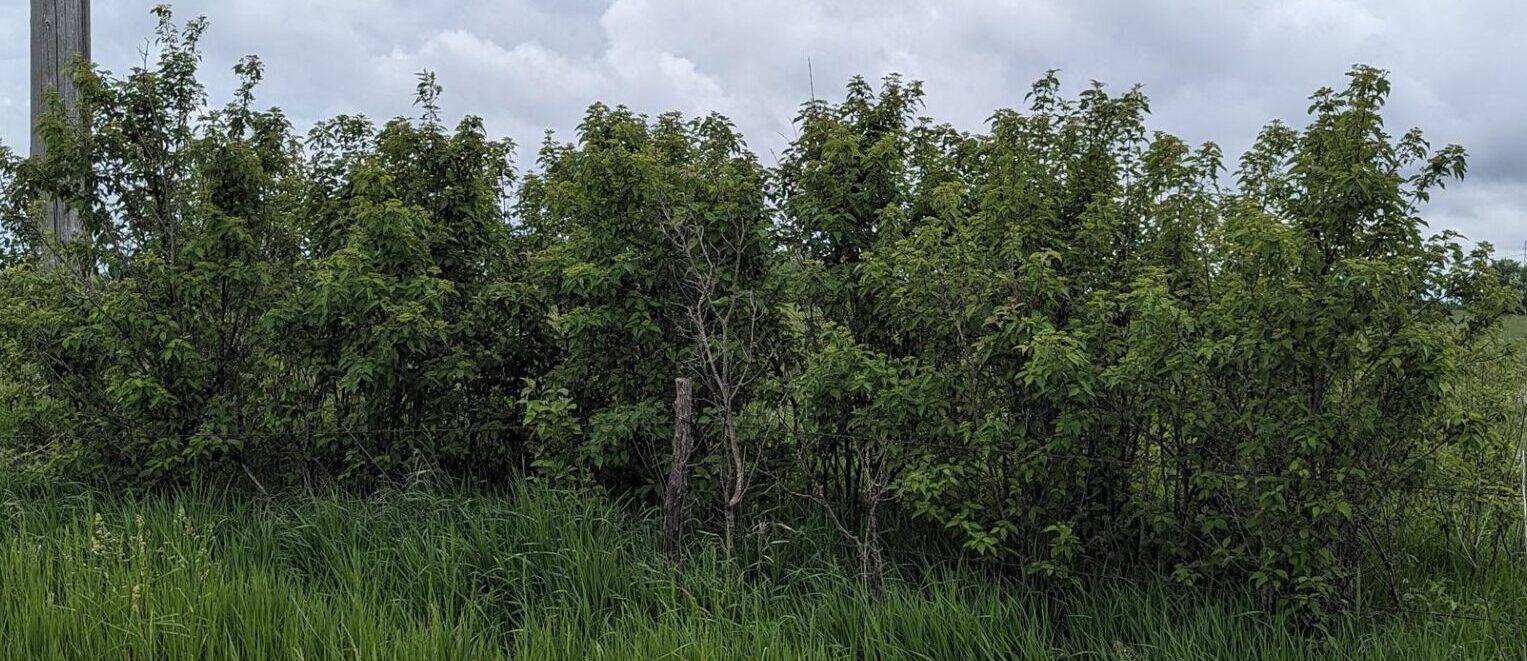Rough-leaved Dogwood
Cornus drummondii

Rough-leaved dogwood leaves in spring

Row of rough-leaved dogwood
 Native Americans valued common hackberry for medicinal, food and ceremonial purposes. The drupes (small fruits) were mixed with fat and corn to form porridge and corn cakes or crushed to add flavor to foods.1 They were also pounded into a paste, molded onto a stick and baked over an open fire.2
Native Americans valued common hackberry for medicinal, food and ceremonial purposes. The drupes (small fruits) were mixed with fat and corn to form porridge and corn cakes or crushed to add flavor to foods.1 They were also pounded into a paste, molded onto a stick and baked over an open fire.2
Other uses of the hackberry include windbreaks, firewood and ornamental planting as an alternative to green ash (Fraxinus pennsylvania) trees which have been severely threatened by the emerald ash borer insect.3 4
Wildlife such as wild turkey, ring-necked pheasant, quail, grouse, lesser prairie chicken, cedar waxwing, robins and up to at least 25 species of songbirds devour the fruit, which persist throughout the winter. Small mammals also consume the fruit. Deer will browse the leaves in the absence of preferred browse species. The tree provides good cover for species such as mule deer, white-tailed deer, upland game birds, small non-game birds, and small mammals.5 The hackberry emperor butterfly uses common hackberry as its host plant for its larvae.6
The common hackberry may grow to a height of 40-60 feet. One of its distinctive features is its grayish-brown bark that is deeply furrowed with warty and corky ridges. The hackberry is an excellent medium-sized tree that is often planted to create shade and privacy on residential properties.7
- Missouri Department of Conservation – Plant Guide Common Hackberry ↩︎
- USDA Plant Guide – Common Hackberry ↩︎
- USDA Natural Resources Conservation Service, Plant Materials Center, Bismarck, North Dakota – Prairie Harvest Germplasm hackberry ↩︎
- Missouri Department of Conservation – Plant Guide Common Hackberry ↩︎
- USDA Plant Guide – Common Hackberry ↩︎
- Missouri Department of Conservation – Plant Guide Common Hackberry ↩︎
- Missouri Botanical Garden Link – Hackberry ↩︎
